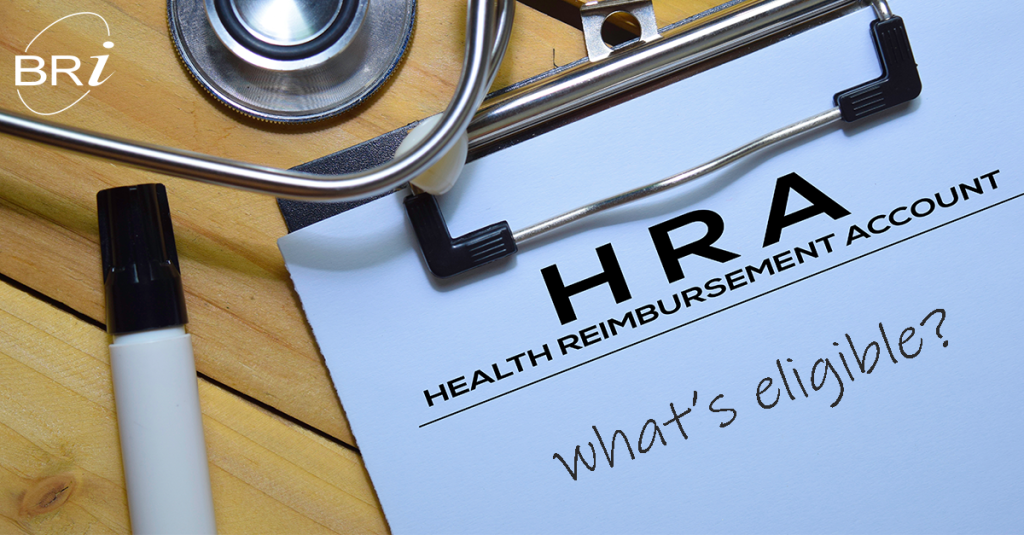You’ve just enrolled in an HRA and are ready to start saving on eligible medical expenses. Great! Now…where to start? What are HRA eligible expenses?
It’s not an easy answer.
Eligible expenses for pre-tax health accounts (e.g., FSAs, HSAs, and HRAs) are defined by IRS Code Section 213(d). This code says:
- Expenses that primarily prevent, treat, diagnose or alleviate a physical or mental defect or illness are eligible.
- Expenses that are for personal care, cosmetic, or general health purposes are not eligible.
Here’s where it gets complicated.
There may be limits to what’s eligible.
Unlike an FSA or an HSA, HRAs are employer-funded. As such, your employer has more flexibility in how the plan is designed.
HRAs are typically designed around how your insurance and other benefits are laid out. Employers can create your HRA plan in a way that helps you save on both your upfront medical costs as well as the per medical expense costs – targeting certain services/expenses that may cost more with the insurance plans they offer.
For example, maybe your insurance doesn’t cover any of your prescription costs. To help you afford those needed drugs and medicines, your employer may make prescriptions eligible for reimbursement under your HRA. To offset the costs they are paying to help you afford what you need (remember, HRAs are completely funded by your employer), they may choose to not cover the costs of over-the-counter (OTC) medicines.
Only about 20% of Beniversal HRA plans are designed to pay all Section 213(d) expenses. If your company’s plan is one of the ones that doesn’t, you may need to think before you make a purchase.
When you can use HRA funds.
There are two popular structures.
- HRA pays first. You can draw from the funds immediately as you incur expenses. Once the funds in your HRA are used up, you pay for your out-of-pocket medical expenses until you’ve met your plan deductible. Then your health plan takes over paying according to coinsurance amounts.
- You pay first. You pay your medical expenses until you’ve spent a preset amount (out of pocket or through an FSA/HSA potentially). After reaching this threshold, your HRA takes over in paying until the funds from that are depleted. Once the funds in your HRA are used up, you pay for your out-of-pocket medical expenses until you’ve met your plan deductible. Then your health plan takes over paying according to coinsurance amounts.
Note that if you have an FSA or HSA, you could potentially use those funds to pay for eligible medical expenses after your HRA funds are gone.
Rate tables.
Rate tables are also something that often come into play. A rate table may be a threshold to reach before you can start using HRA funds, dependent on the type of insurance plan you are on – single vs 2 person vs family. For example, paying up to $1,000 out-of-pocket on a single plan vs $2,000 on a family plan before the HRA funds will begin reimbursing new expenses. Alternatively, a rate table may determine different rates of payment. For example:
- $0-$500. Your HRA covers all of the expense.
- $501-$1,000. Your HRA covers 50% of the expense.
- Over $1,000. You’re responsible for the expense.
Note that the dollar amounts used in this rate table structure are typically related to your insurance structure.
Helpful hint. You may need to submit proof to BRI that you’ve met the threshold to use your HRA funds since we don’t have access to your insurance. Save time and send in an EOB summary instead of individual claims.
Other rules that may be in place.
Features such as percent of expense payments, fixed dollar payments, and varied reimbursement rates for in-network and out-of-network expenses may affect how much you’re able to reimburse yourself for eligible expenses.
What could be an HRA eligible expense?
Here are some of the major categories of Section 213(d) eligible expenses, and how they may be affected by the type of HRA you have.
- Coinsurance and deductible expenses. These are both related to your insurance. Some HRA plans are designed to cover only your coinsurance expenses, only your deductible expenses, or both! Your Explanation of Benefits (EOB) from insurance would be your receipt/proof when submitting a claim.
- Dental & vision care. If you have a Limited HRA, expenses related to these two categories will be the only ones eligible. On the contrary, your employer may choose to not cover one or both these if you have a comprehensive dental and/or vision plan.
- Specialists or alternative medicine. These types of expenses include things like acupuncture, a chiropractor, physical therapy, and specialists’ fees. Whether or not these are covered will likely be based on the needs of the employee population and what your insurance covers.
- Prescription drugs and OTC items. A large number of HRA plans with BRI cover prescription drugs as well as eligible OTC items (drugs, medicines, and medical supplies).
To verify what’s eligible under your plan, check your Plan Highlights. You can find information at top of the Account Information section under Medical Expense Information.



